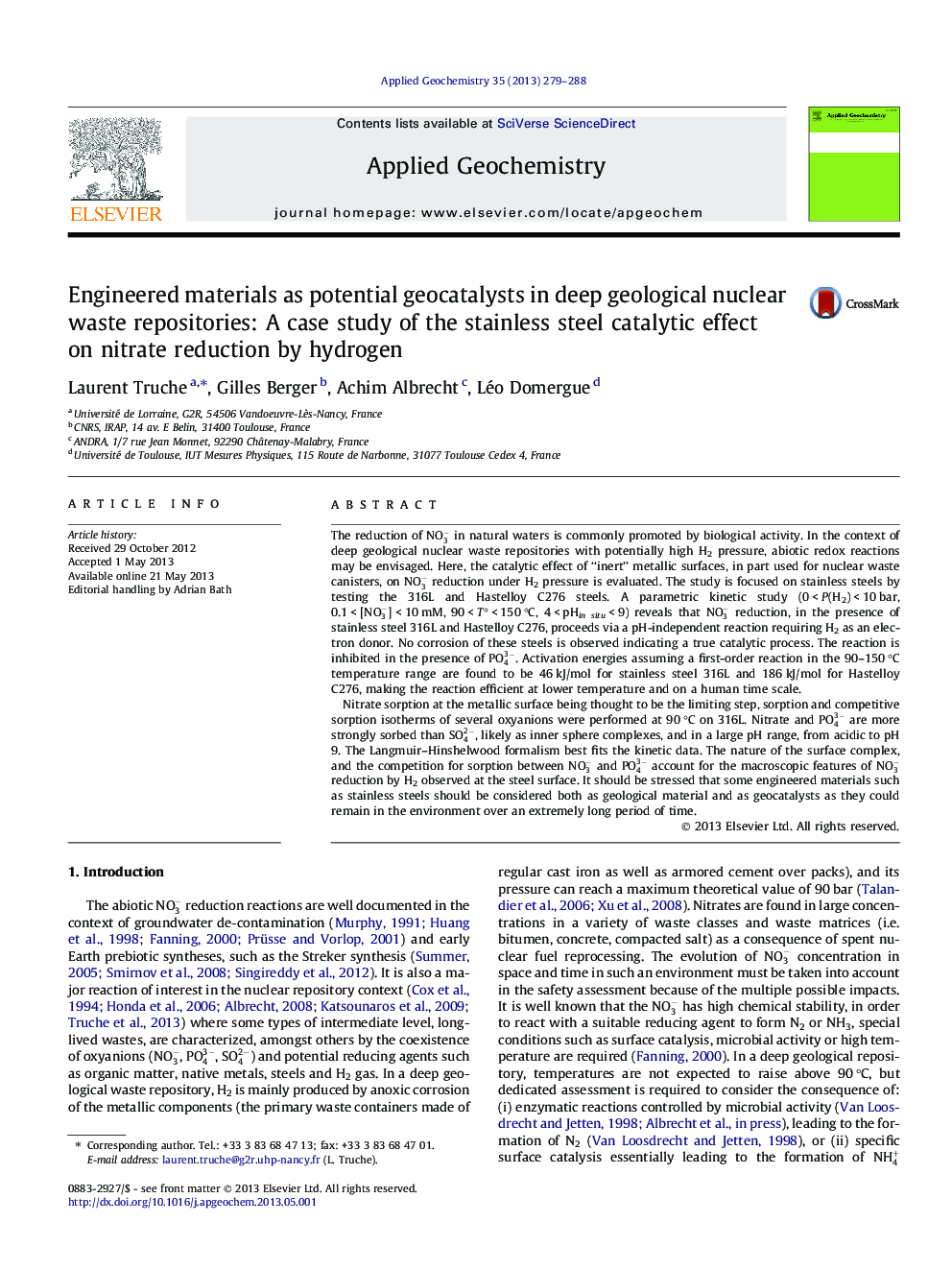| Article ID | Journal | Published Year | Pages | File Type |
|---|---|---|---|---|
| 6335376 | Applied Geochemistry | 2013 | 10 Pages |
Abstract
The reduction of NO3- in natural waters is commonly promoted by biological activity. In the context of deep geological nuclear waste repositories with potentially high H2 pressure, abiotic redox reactions may be envisaged. Here, the catalytic effect of “inert” metallic surfaces, in part used for nuclear waste canisters, on NO3- reduction under H2 pressure is evaluated. The study is focused on stainless steels by testing the 316L and Hastelloy C276 steels. A parametric kinetic study (0 < P(H2) < 10 bar, 0.1 < [NO3-] < 10 mM, 90 < T° < 150 °C, 4 < pHin situ < 9) reveals that NO3- reduction, in the presence of stainless steel 316L and Hastelloy C276, proceeds via a pH-independent reaction requiring H2 as an electron donor. No corrosion of these steels is observed indicating a true catalytic process. The reaction is inhibited in the presence of PO43-. Activation energies assuming a first-order reaction in the 90-150 °C temperature range are found to be 46 kJ/mol for stainless steel 316L and 186 kJ/mol for Hastelloy C276, making the reaction efficient at lower temperature and on a human time scale.Nitrate sorption at the metallic surface being thought to be the limiting step, sorption and competitive sorption isotherms of several oxyanions were performed at 90 °C on 316L. Nitrate and PO43- are more strongly sorbed than SO42-, likely as inner sphere complexes, and in a large pH range, from acidic to pH 9. The Langmuir-Hinshelwood formalism best fits the kinetic data. The nature of the surface complex, and the competition for sorption between NO3- and PO43- account for the macroscopic features of NO3- reduction by H2 observed at the steel surface. It should be stressed that some engineered materials such as stainless steels should be considered both as geological material and as geocatalysts as they could remain in the environment over an extremely long period of time.
Related Topics
Physical Sciences and Engineering
Earth and Planetary Sciences
Geochemistry and Petrology
Authors
Laurent Truche, Gilles Berger, Achim Albrecht, Léo Domergue,
